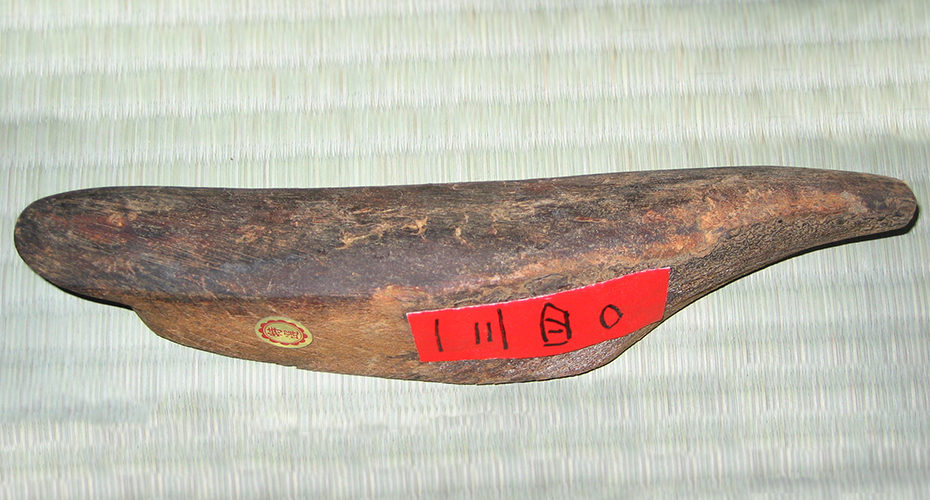Katsuo is a staple of Japanese cooking, and many famous dishes depend on it.
This post covers three different angles on this essential ingredient: what is katsuo, katsuo sushi, and katsuobushi and the dishes that use it.
Whether you’re new to Japanese cuisine, or a seasoned veteran, I hope this info helps you elevate your dining experiences.
What is Katsuo?
Katsuo (鰹) is an important fish in Japanese cuisine. It’s also called skipjack tuna in English, and its scientific name is Katsuwonus pelamis. Katsuo is eaten raw or seared. But its most famous form is katsuobushi.
Skipjack is considered a type of bonito. So katsuobushi shavings are commonly called bonito flakes. These flakes are used in many classic Japanese dishes.
And I’ll get to those later in this post. But first, let’s look at this fish in more detail.
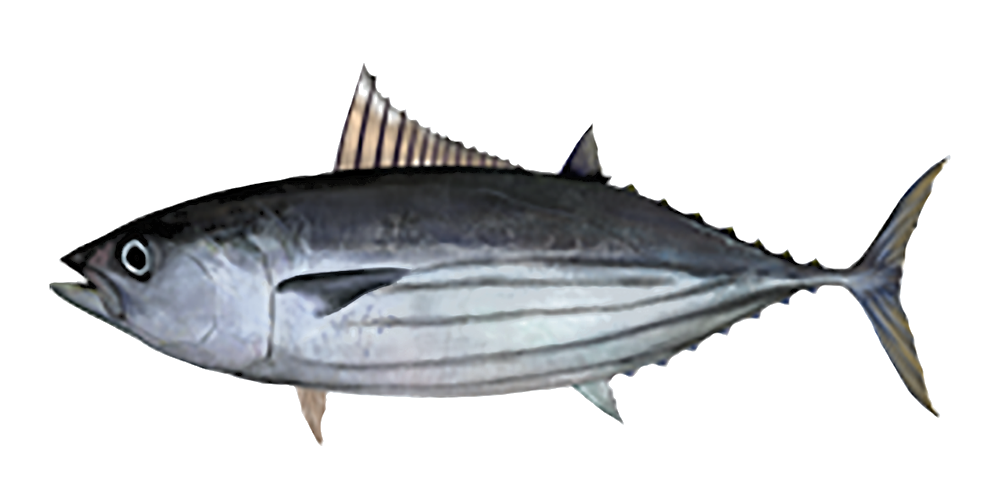
The Skipjack Tuna, Fisheries, and Sustainability
The skipjack is an open-ocean fish in the tuna-mackerel family (Scombridae). It’s found throughout the world in tropical and warm-temperate oceans.
In Japan, katsuo is mainly caught along the country’s west coast and south. A few fish come from the Sea of Japan. And these are called mayoigatsuo (迷い鰹). The skipjack travels up and down the country with the seasons, which I’ll discuss soon.
Skipjack can grow to nearly four feet in length and 70 pounds. Amazingly, they are one of the few species of warm-blooded fish. Skipjack also has the highest muscle mass dedicated to the locomotion of any animal.
Fisheries for skipjack are intense. Most stocks, including the two in the Pacific, are considered sustainable. However, by weight, skipjack is the third-highest ocean-captured fish on the planet. And its population sizes are difficult to assess. So while skipjack is generally considered sustainable (NOAA – Fish Watch), this is not a guarantee.
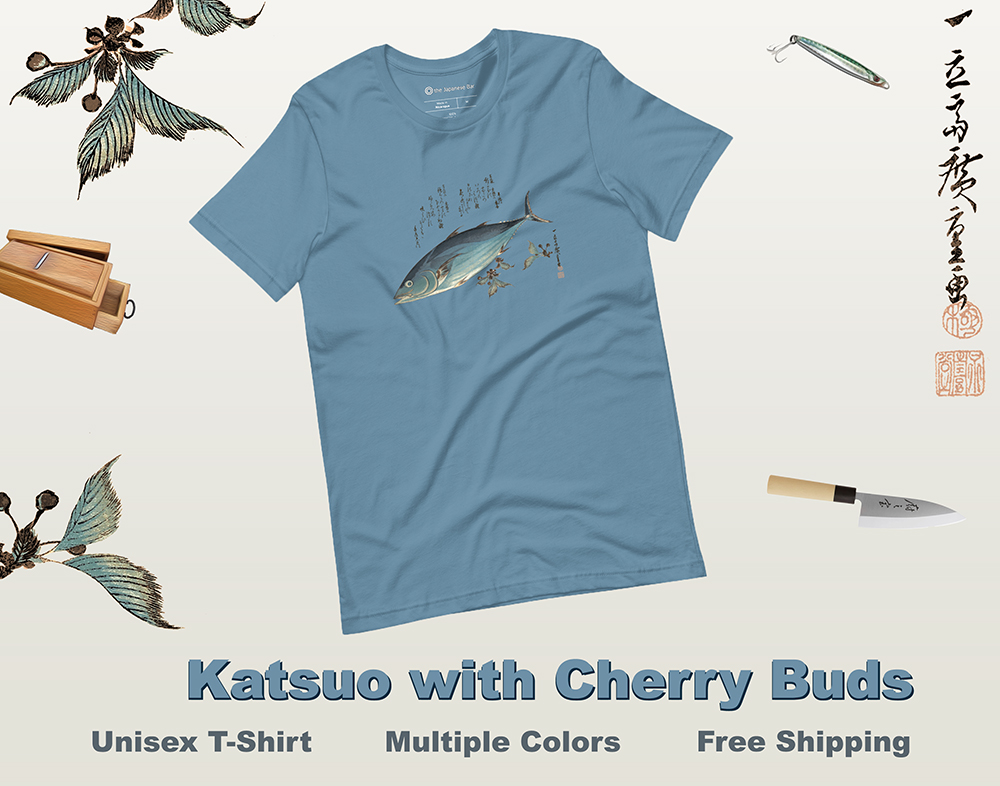
Fresh Katsuo Sushi
Katsuo is a classic Edomae sushi topping and is occasionally served raw or seared in Japanese restaurants. But the quality of the meat deteriorates quickly. So it must be served super fresh, right after it’s caught. The rapid deterioration is why katsuo is so often served as tataki.
Katsuo is considered a type of akami, or lean red meat tuna.
Katsuo Seasons
While skipjack is caught year-round, it’s associated with certain seasons in Japan. In Tokyo, the first fish start showing up in late spring as they migrate north. These skipjacks are called hatsugatsuo (初鰹), or “first katsuo.” They’re smaller and leaner katsuo with a delicate flavor.
Skipjack put on more weight and fat in the summer and fall. Later in the season, they begin moving south and are called modorigatsuo (戻り鰹), which means “returning katsuo.” These fish have more flavor and are often served as tataki.
Katsuo prefers warmer temperatures and will migrate further south in the winter.
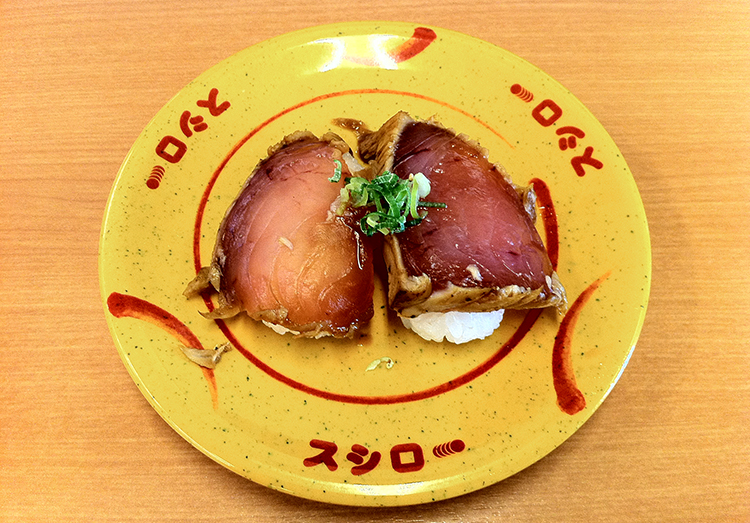
Katsuo Nigiri
Katsuo nigiri is delicous. It’s leaner than bluefin tuna. But it’s also slightly oily. When very fresh, it makes excellent nigiri. The skin is usually seared (aburi) before serving.
Because skipjack is an oily fish, it’s often topped with scallion and grated ginger. But some chefs use karashi (Japanese mustard) or yuzu kosho in place of onion and ginger.
Katsuo Sashimi
Anytime katsuo nigiri is served, it can be enjoyed as sashimi too. Its skin is usually seared, and then it’s sliced thin. Modorigatsuo is especially prized as sashimi.
Again, raw katsuo must be extremely fresh. So nigiri and sashimi katsuo aren’t always available.
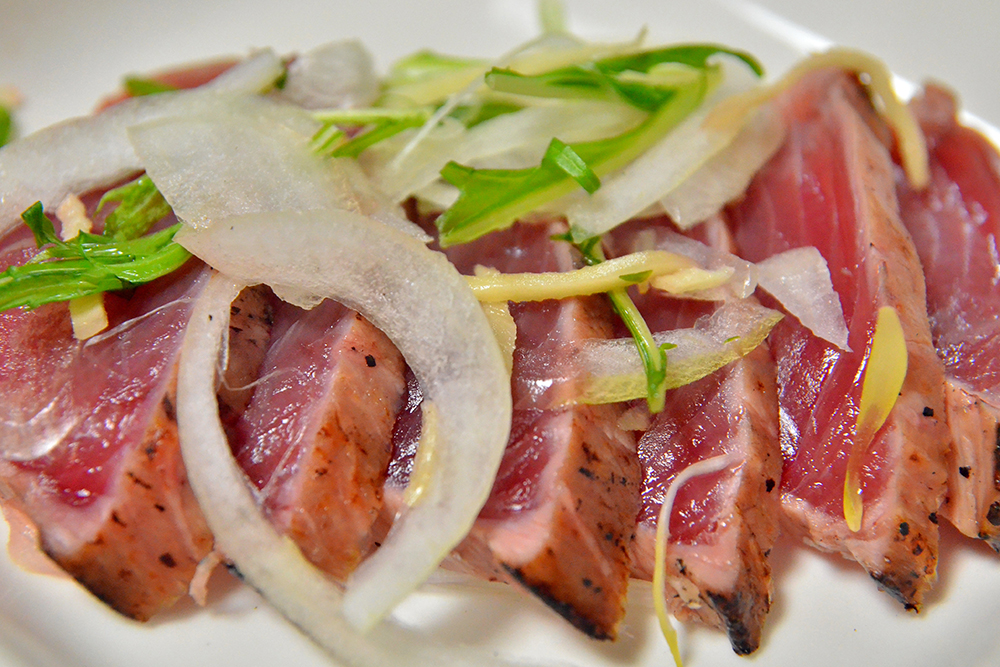
Katsuo Tataki
Katsuo involves searing the whole skipjack fillet and then slicing it like sashimi. Searing can be done by boiling, grilling, or broiling. Some chefs even use a torch, though this can impart the flavor of butane.
The seared katsuo is cut thick and served with a flavorful sauce and a variety of vegetables. Onion, ginger, and garlic are typical. Also known as katsuo no tataki (鰹のタタキ), this is a popular dish all over Japan. And it’s the most famous dish of Kochi prefecture.
Take a look at Cooking with Dog’s amazing video below to learn more.
Preparing Katsuo
Skipjack is not easy to prepare. It’s both soft and bony. But it’s doable even at home.
Below is a how-to video from Akira san’s Sushi at Home. Their content is both entertaining and informative.
If you’re curious, here’s part two of their video. In this one, chef Akira explains how to prepare katsuo warayaki.
What is Katsuobushi?
Katsuobushi is simmered, smoked, and koji-fermented skipjack tuna. It’s sold in wood-like blocks and shaved to make bonito flakes. Katsuobushi is an ingredient in many recipes. Its most common use is in dashi. But it’s also found on okonomiyaki, onigiri, takoyaki, agedashi tofu, and countless other dishes.
The vast majority of katsuobushi is from Shizuoka (Yaiza) and Kagoshima. Kochi, Okinawa, and Miyagi are also places where the rock-hard fillets are made.
But let’s start with how katsuobushi is made.
How Katsuobushi is Made
Making authentic katsuobushi isn’t easy or fast. And traditional producers have been using the same method since the 15th century.
The process starts by filleting the bonito into four pieces. The fatty belly is discarded because it doesn’t dry well.
Next, the fillets are simmered for an hour or two below the boiling point. Afterward, they’re cooled in water. Once cooled, the fillets are deboned by hand and ready for smoking.
At this point, a few artisans take the extra step to use the tebiyama method (tebiyama shiki 手火山式). The fish go into boxes that resemble large koji trays (kojibuta). They’re then smoked over a wood fire for one to two hours. And the boxes are constantly rotated to ensure even smoke exposure.
Whether or not tebiyama shiki happens, the next step is to move the katsuo fillets into a large, multi-level smoker. Again, wood is burned, and the fish smoke for around four hours. Afterward, they’re cooled so moisture comes to the surface. The next day the process repeats. And this happens every day for a month or more!
At this point, the rock-hard fillets are called arabushi (荒節). And I’ll discuss this more in the next section. But to make authentic katsuobushi, there is more work to be done.
Koji spores (Aspergillus glaucus) are sprinkled onto the arabushi, which is allowed to rest for a couple of weeks. The koji is then removed, and the process begins again. After two cycles of koji aging, the fillets are called karebushi (枯節), or dried fillets.
If the process happens four or more times, it is called honkarebushi (本枯節). This stuff is the authentic katsuobushi. And the process of koji fermenting can take four months or more.
Check out this excellent video on making traditional katsuobushi from Great Big Story.
Types of Dried Katsuo
To make authentic katsuobushi, the skipjack evolves through many steps. After this smoking process is complete and the fillets are very hard, they are called arabushi or aragatsuo (荒節). Most of the dried katsuo and bonito flakes in Japan are aragatsuo. It has a rich, fishy flavor and is affordable.
Aragatsuo is used to make hanakatsuo (花かつお) flakes. And these are available everywhere. They’re not technically made from katsuobushi, however.
After a couple of cycles of koji fermentation, the fillets are now called karebushi. And these can also be purchased, though they’re more expensive.
Finally, true honkarebushi is the finest-quality dried katsuo. It has a deep but delicate flavor.
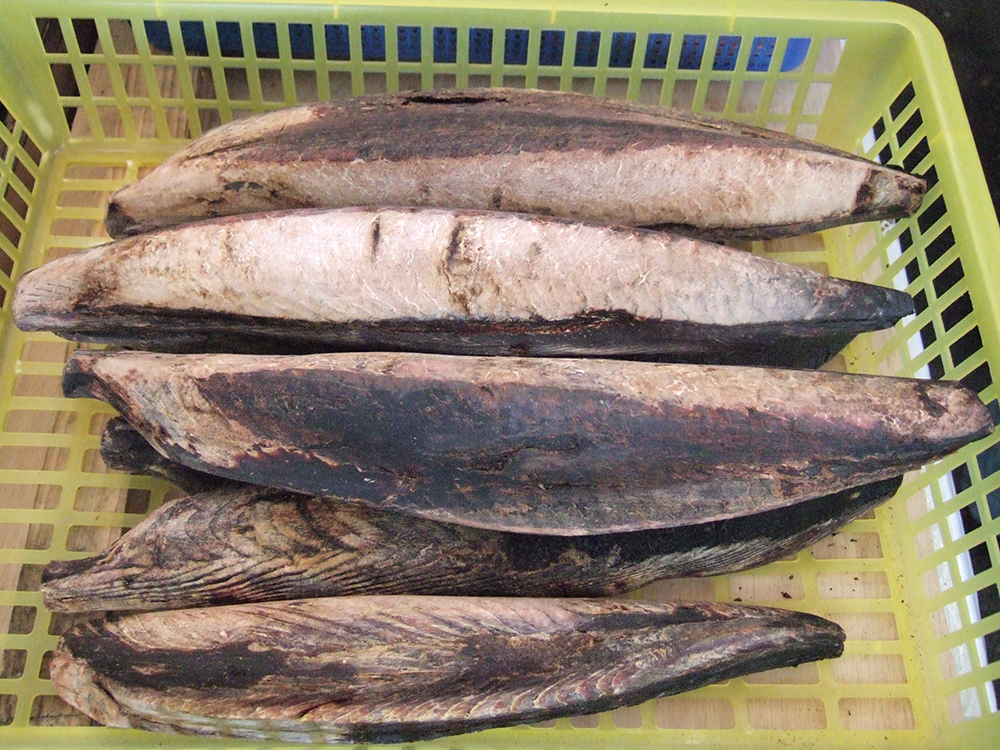
The Katsuobushi Block
While bonito flakes are cheap and convenient, shavings from katsuobushi have more flavor. So if you want to make the delicious shaved katsuo, here are some tips.
How to Store a Katsuobushi Block
Storing a katsuobushi block is all about keeping it dry and out of the sun. Vacuum seal it if possible. And if this isn’t an option, wrap the katsuobushi tightly in plastic wrap. Then place this into a ziplock bag with silica gel packets.
Once you’ve started shaving the block, then it’s more likely to spoil, especially in humid climates. In this case, use the method above of plastic wrap, ziplock bag, and silica gel packets. But now you should store it in the fridge.
How Long is a Katsuobushi Block Good For?
Authentic katsuobushi blocks can last a long time if stored properly. Vacuum-sealed and in the fridge, they can last up to four years. But eventually, it will lose flavor.
Where to Get Katsuobushi Near Me?
Blocks of katsuobushi are easy to find in Japan. But if you live in the US, they’re much more elusive. Japanese specialty markets are the best place to check if you want one right away.
Luckily, quality katsuobushi blocks are available online. Below are a couple of options from Amazon. And as an Amazon Associate, I earn commissions from qualifying purchases.
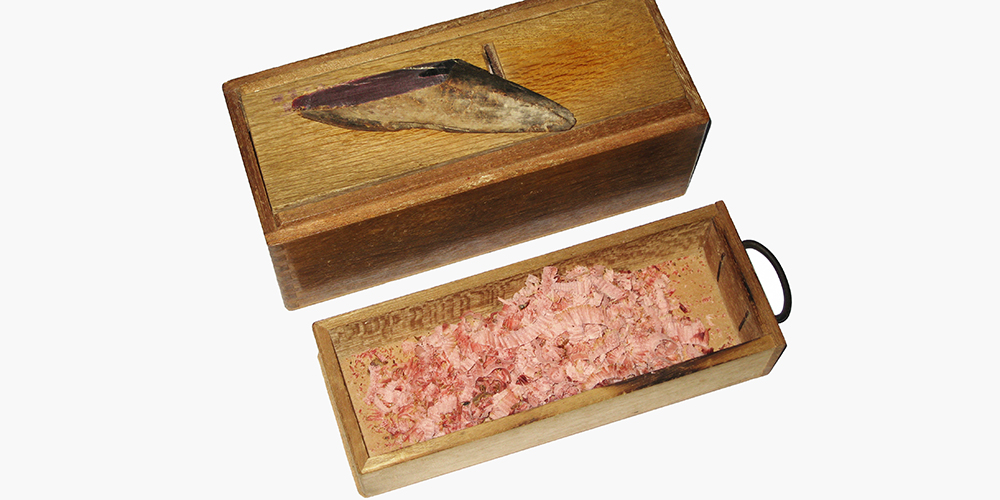
Shaving Katsuobushi
Shavings from katsuobushi are called katsuo kezuri-bushi (かつお削りぶし), or bonito flakes. Everything you need to make the ultimate bonito flakes can be bought online. Below is a general breakdown of shaving kezuribushi. And I’ll link to a few tools.
Of course, bags of bonito flakes are easy to find, and they’re affordable. They just don’t have the richness of flavor. And once they’re open, they go flat quickly.
How to Shave Katsuobushi
To make your bonito flakes at home, you’ll need a katsuobushi kezuriki (鰹節削り器). This clever tool is a plane that will shave off flakes. And the shavings collect in a box below.
First, wipe the katsuobushi off. Then hold the block with the tail away and the head section toward you. Apply a steady pressure down against the kezuriki. And push the katsuobushi forward and back over the cutting blade.
Only use as much downward pressure as necessary. If your hand slips under heavy pressure, you can get hurt.
The flakes will collect in the box below. And they should be used immediately.
Check out this video from KatsuobushiYamatoya to see how it’s done!
Purchase Japanese Kezuriki
Here are a couple of top-rated katsuobushi kezuriki. Both are made in Japan and will have you shaving katsuobushi fast! As an Amazon Associate, I earn commissions on qualifying purchases.
Types of Bonito Flakes
The Japanese term for bonito flakes is katsuo kezuribushi. But there are a couple of kinds. And each has its flavor and price-point.
The most common type of bonito flake is hanakatsuo. It’s made from arabushi and hasn’t gone through the lengthy koji fermentation step. Therefore, hanakatsuo is not true katsuobushi. But it is affordable and readily available. It has a rich flavor that’s somewhat smoky and fishy.
Shaved honkarebushi exists too. And it’s made from authentic katsuobushi.
Honkarebushi is more expensive and rare. And it has a delicate, smooth flavor with depth.
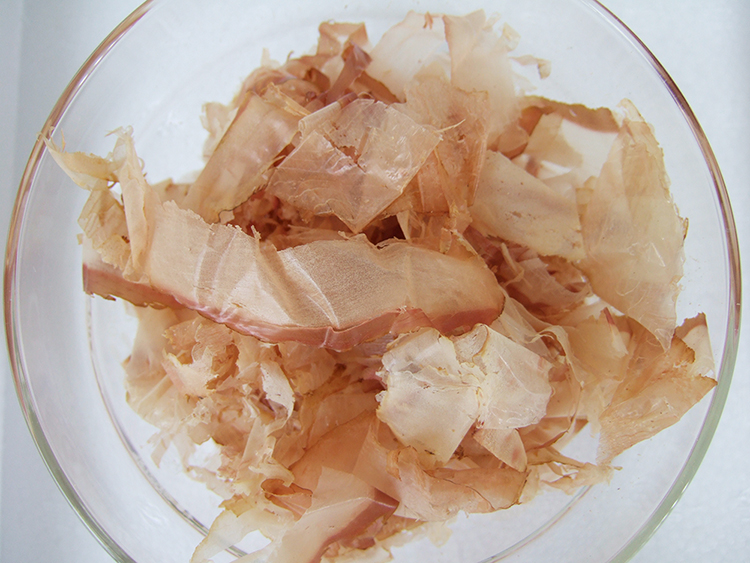
Cooking with Katsuobushi
Katsuobushi is used in a wide variety of Japanese dishes. It’s a famous ingredient in dashi stock, along with kombu seaweed. And dashi is a staple of the Japanese kitchen.
Besides dashi, bonito flakes are used on and in many classic dishes. This section will provide a brief overview of some of the most important.
Katsuo Dashi
Katsuo dashi is the most common type of dashi. Yes, dashi can be made with just kombu, shiitake, or other types of dried fish. But it’s katsuo-based dashi that is the mainstream style.
And if you didn’t already know, dashi is in a staggering number of dishes. It’s a common soup base, so you’ll find it in miso and many other soups.
Dashi is also used for agedashi tofu, tempura udon, chawanmushi, nabemono, and so much more.
Tsuyu
Tsuyu is a sauce and soup base used in many different recipes. It uses dashi, soy, mirin, and sugar.
Agedashi Tofu
The base of this fried tofu dish is dashi. And typically, shave katsuo is placed on top of the tofu, as well.
Okonomiyaki
Okonomiyaki is a savory pancake made with flour, eggs, cabbage, sauces, and other ingredients. And it’s topped with bonito flakes.
Takoyaki
Takoyaki is somewhat similar to okonomiyaki. It contains battered and fried octopus balls, green onions, and sauce. And again, it’s topped with shaved katsuo flakes.
Okaka Onigiri
Onigiri are rice balls and a common snack in Japan. Okaka is a rice seasoning made with bonito flakes and soy sauce. This seasoning goes onto the onigiri.
Katsuo Fumi Furikake
Katsuo Fumi Furikake is a rice seasoning made with dried bonito, seaweed, sesame seeds, and soy sauce. And you can use katsuo fumi furikake as a substitute for bonito flakes, like okonomiyaki and takoyaki for example. It’s also excellent on onigiri, yakisoba, and yakiudon.
